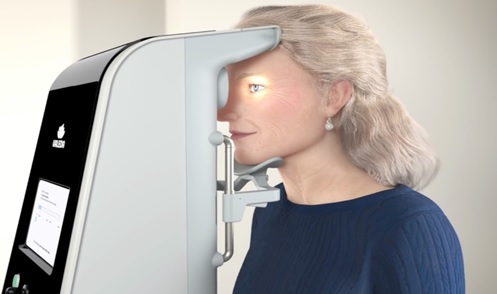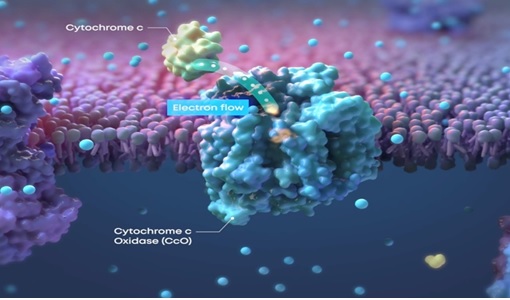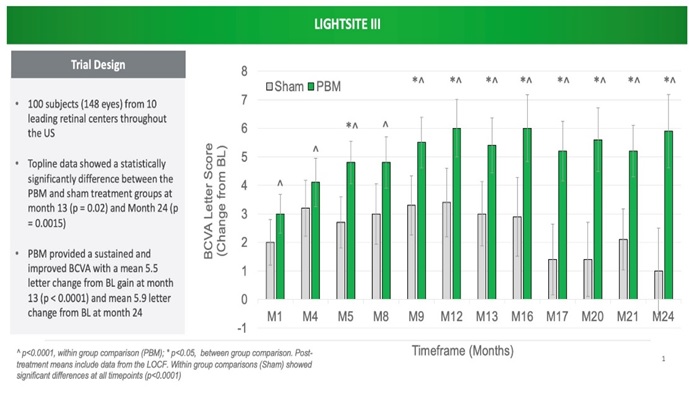 Windsor Clinic: 0800 644 0700 -
Reading Clinic: 0800 644 0900
tannereyes@sapphire-eyecare.co.uk
Windsor Clinic: 0800 644 0700 -
Reading Clinic: 0800 644 0900
tannereyes@sapphire-eyecare.co.uk
 Windsor Clinic: 0800 644 0700 -
Reading Clinic: 0800 644 0900
tannereyes@sapphire-eyecare.co.uk
Windsor Clinic: 0800 644 0700 -
Reading Clinic: 0800 644 0900
tannereyes@sapphire-eyecare.co.uk

Photobiomodulation (PBM) is a form of light therapy showing promise in the control of dry Age-Related Macular Degeneration (AMD). Recent trial data has suggested a beneficial effect in patients with certain dry age-related macular changes. The main data coming from the LIGHTSITE III trial using the Valeda light delivery system.
Dry AMD has otherwise remained frustratingly resistant to treatment in spite of extensive research. Nutritional supplements have offered only marginal benefit, and anti-complement injections are yet to be approved for use in the UK.
Light therapy, primarily red and infrared, has shown some benefit in numerous conditions throughout the body. The science of PBM is developing rapidly, with research showing potential short-term results in the earlier stages of dry AMD. This works best for those with drusen (yellowish blobs beneath the retina) rather than atrophy (loss of tissue).
PBM IS THOUGHT TO WORK IN A NUMBER OF WAYS:


Ideal patients are those showing signs of early dry AMD (the grades currently considered suitable for nutritional supplements), and a visual acuity of 6/36 or better.
A treatment course consists of nine sessions over a 3 to 5 week period, each of which lasts just a few minutes. Three separate colours/wavelengths are used with no discomfort or significant side effects for the patient. Therapy can be offered to one or both eyes, depending on clinical findings and patient preference.
Valeda uses three specific wavelengths: 590, 660 and 850 nm. Each has a specific role in the cells they target.
They are:
FIRST APPROVED TREATMENT FOR DRY AGE-RELATED MACULAR DEGENERATION (AMD) USING PHOTOBIOMODULATION
Initial studies have shown a significant effect with a benefit maintained over 2 years
Further clinical trials are in progress but, given the evidence to date, and the lack of any other effective treatment, this minimally invasive and very low-risk treatment appeals to some sufferers
POTENTIAL BENEFITS OF PBM TREATMENT:

Disclaimer :
Disclaimer : The information provided in this website is intended as a useful aid to general practitioners, optometrists and patients. It is impossible to diagnose and treat patients adequately without a thorough eye examination by a qualified ophthalmologist, optometrist or your general practitioner. Hopefully the information will be of use prior to and following a consultation which it supplements and does not replace.


